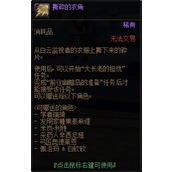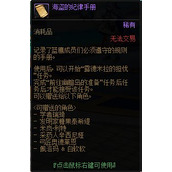Spring@Cacheable指定失效时间代码实例
本篇文章小编给大家分享一下Spring@Cacheable指定失效时间代码实例,文章代码介绍的很详细,小编觉得挺不错的,现在分享给大家供大家参考,有需要的小伙伴们可以来看看。
新版本配置
@Configuration
@EnableCaching
public class RedisCacheConfig {
@Bean
public RedisCacheManagerBuilderCustomizer redisCacheManagerBuilderCustomizer() {
return (builder) -> {
for (Map.Entry entry : RedisCacheName.getCacheMap().entrySet()) {
builder.withCacheConfiguration(entry.getKey(),
RedisCacheConfiguration.defaultCacheConfig().entryTtl(entry.getValue()));
}
};
}
public static class RedisCacheName {
public static final String CACHE_10MIN = "CACHE_10MIN";
@Getter
private static final Map cacheMap;
static {
cacheMap = ImmutableMap.builder().put(CACHE_10MIN, Duration.ofSeconds(10L)).build();
}
}
}
老版本配置
interface CacheNames{
String CACHE_15MINS = "sssss:cache:15m";
/** 30分钟缓存组 */
String CACHE_30MINS = "sssss:cache:30m";
/** 60分钟缓存组 */
String CACHE_60MINS = "sssss:cache:60m";
/** 180分钟缓存组 */
String CACHE_180MINS = "sssss:cache:180m";
}
@Component
public class RedisCacheCustomizer
implements CacheManagerCustomizer {
/** CacheManager缓存自定义初始化比较早,尽量不要@autowired 其他spring 组件 */
@Override
public void customize(RedisCacheManager cacheManager) {
// 自定义缓存名对应的过期时间
Map expires = ImmutableMap.builder()
.put(CacheNames.CACHE_15MINS, TimeUnit.MINUTES.toSeconds(15))
.put(CacheNames.CACHE_30MINS, TimeUnit.MINUTES.toSeconds(30))
.put(CacheNames.CACHE_60MINS, TimeUnit.MINUTES.toSeconds(60))
.put(CacheNames.CACHE_180MINS, TimeUnit.MINUTES.toSeconds(180)).build();
// spring cache是根据cache name查找缓存过期时长的,如果找不到,则使用默认值
cacheManager.setDefaultExpiration(TimeUnit.MINUTES.toSeconds(30));
cacheManager.setExpires(expires);
}
}
@Cacheable(key = "key", cacheNames = CacheNames.CACHE_15MINS)
public String demo2(String key) {
return "abc" + key;
}
@Cacheable缓存失效时间策略默认实现及扩展
之前对Spring缓存的理解是每次设置缓存之后,重复请求会刷新缓存时间,但是问题排查阅读源码发现,跟自己的理解大相径庭。所有的你以为都仅仅是你以为!!!!
背景
目前项目使用的spring缓存,主要是CacheManager、Cache以及@Cacheable注解,Spring现有的缓存注解无法单独设置每一个注解的失效时间,Spring官方给的解释:Spring Cache是一个抽象而不是一个缓存实现方案。
因此对于缓存失效时间(TTL)的策略依赖于底层缓存中间件,官方给举例:ConcurrentMap是不支持失效时间的,而Redis是支持失效时间的。
Spring Cache Redis实现
Spring缓存注解@Cacheable底层的CacheManager与Cache如果使用Redis方案的话,首次设置缓存数据之后,每次重复请求相同方法读取缓存并不会刷新失效时间,这是Spring的默认行为(受一些缓存影响,一直以为每次读缓存也会刷新缓存失效时间)。
可以参见源码:
org.springframework.cache.interceptor.CacheAspectSupport#execute(org.springframework.cache.interceptor.CacheOperationInvoker, java.lang.reflect.Method, org.springframework.cache.interceptor.CacheAspectSupport.CacheOperationContexts)
private Object execute(final CacheOperationInvoker invoker, Method method, CacheOperationContexts contexts) {
// Special handling of synchronized invocation
if (contexts.isSynchronized()) {
CacheOperationContext context = contexts.get(CacheableOperation.class).iterator().next();
if (isConditionPassing(context, CacheOperationExpressionEvaluator.NO_RESULT)) {
Object key = generateKey(context, CacheOperationExpressionEvaluator.NO_RESULT);
Cache cache = context.getCaches().iterator().next();
try {
return wrapCacheValue(method, cache.get(key, () -> unwrapReturnValue(invokeOperation(invoker))));
}
catch (Cache.ValueRetrievalException ex) {
// The invoker wraps any Throwable in a ThrowableWrapper instance so we
// can just make sure that one bubbles up the stack.
throw (CacheOperationInvoker.ThrowableWrapper) ex.getCause();
}
}
else {
// No caching required, only call the underlying method
return invokeOperation(invoker);
}
}
// Process any early evictions
processCacheEvicts(contexts.get(CacheEvictOperation.class), true,
CacheOperationExpressionEvaluator.NO_RESULT);
// Check if we have a cached item matching the conditions
Cache.ValueWrapper cacheHit = findCachedItem(contexts.get(CacheableOperation.class));
// Collect puts from any @Cacheable miss, if no cached item is found
List cachePutRequests = new LinkedList<>();
if (cacheHit == null) {
collectPutRequests(contexts.get(CacheableOperation.class),
CacheOperationExpressionEvaluator.NO_RESULT, cachePutRequests);
}
Object cacheValue;
Object returnValue;
if (cacheHit != null && !hasCachePut(contexts)) {
// If there are no put requests, just use the cache hit
cacheValue = cacheHit.get();
returnValue = wrapCacheValue(method, cacheValue);
}
else {
// Invoke the method if we don't have a cache hit
returnValue = invokeOperation(invoker);
cacheValue = unwrapReturnValue(returnValue);
}
// Collect any explicit @CachePuts
collectPutRequests(contexts.get(CachePutOperation.class), cacheValue, cachePutRequests);
// Process any collected put requests, either from @CachePut or a @Cacheable miss
for (CachePutRequest cachePutRequest : cachePutRequests) {
cachePutRequest.apply(cacheValue);
}
// Process any late evictions
processCacheEvicts(contexts.get(CacheEvictOperation.class), false, cacheValue);
return returnValue;
}
因此如果我们需要自行控制缓存失效策略,就可能需要一些开发工作,具体如下。
Spring Cache 失效时间自行刷新
1:基于Spring的Cache组件进行定制,对get方法进行重写,刷新过期时间。相对简单,不难;此处不贴代码了。
2:可以使用后台线程进行定时的缓存刷新,以达到刷新时间的作用。
3:使用spring data redis模块,该模块提供对了TTL更新策略的,可以参见:org.springframework.data.redis.core.PartialUpdate
注意:
Spring对于@Cacheable注解是由spring-context提供的,spring-context提供的缓存的抽象,是一套标准而不是实现。
而PartialUpdate是由于spring-data-redis提供的,spring-data-redis是一套spring关于redis的实现方案。
















